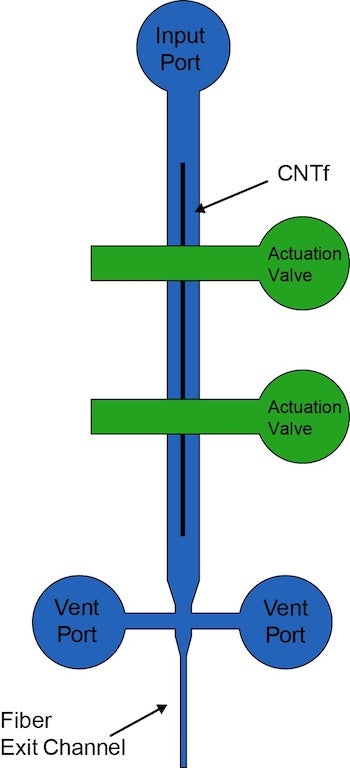Rice University scientists, engineers develop microfluidic devices, microelectrodes for gentle implantation
Rice University researchers (including Jacob Robinson; Matteo Pasquali; and Caleb Kemere) have invented a device that uses fast-moving fluids to insert flexible, conductive carbon nanotube fibers into the brain, where they can help record the actions of neurons. The Rice team’s microfluidics-based technique promises to improve therapies that rely on electrodes to sense neuronal signals and trigger actions in patients with epilepsy and other conditions. Eventually, the researchers said, nanotube-based electrodes could help scientists discover the mechanisms behind cognitive processes and create direct interfaces to the brain that will allow patients to see, to hear or to control artificial limbs. The device uses the force applied by fast-moving fluids that gently advance insulated flexible fibers into brain tissue without buckling. This delivery method could replace hard shuttles or stiff, biodegradable sheaths used now to deliver wires into the brain. Both can damage sensitive tissue along the way. The technology is the subject of a paper in the American Chemical Society journal Nano Letters.

